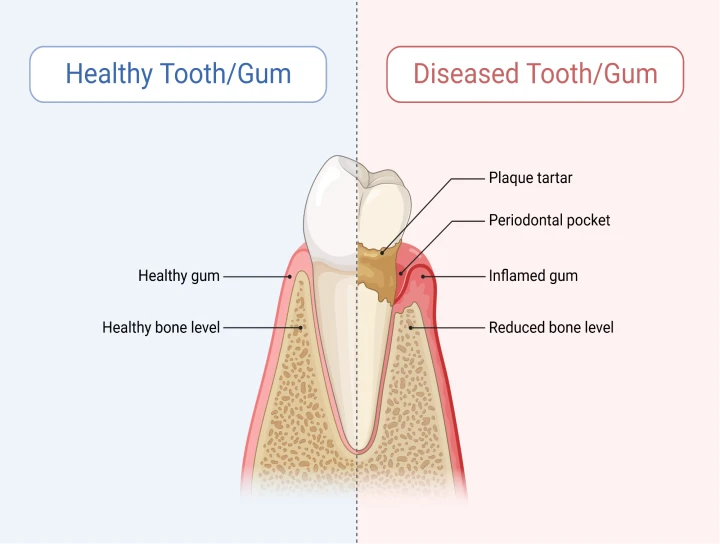
Inflammation is a double-edged sword in oral health. While it is the body’s natural defense mechanism against infections, chronic inflammation in the mouth can lead to gum diseases such as gingivitis and periodontitis.
Biochemically, inflammation in oral tissues involves a cascade of molecular signals. Key markers include pro-inflammatory cytokines like interleukin-1β (IL-1β) and tumor necrosis factor-α (TNF-α), which amplify the immune response. Enzymes such as matrix metalloproteinases (MMPs) are released, breaking down connective tissue and contributing to tissue damage. Elevated levels of C-reactive protein (CRP) have also been linked to periodontitis, suggesting systemic implications of oral inflammation.
The biochemical changes during oral inflammation involve an intricate interplay of signalling molecules and enzymes. Reactive oxygen species (ROS) are generated in response to bacterial invasion, contributing to oxidative stress and tissue damage. Additionally, the release of prostaglandins, such as PGE2, exacerbates the inflammatory response by increasing vascular permeability and promoting immune cell infiltration. The dysregulation of lipid mediators, such as leukotrienes, further amplifies inflammation and tissue degradation. Understanding these molecular dynamics provides deeper insights into potential therapeutic targets for managing oral health.
By understanding the biochemical underpinnings of oral inflammation, we can better protect our smiles and overall health.
References
https://doi.org/10.3389/fcimb.2024.1493818
https://doi.org/10.3389/fimmu.2024.1435054
*Image Credit: Biorender


No Any Replies to “The Biochemical Battle in the Mouth”
Leave a Reply